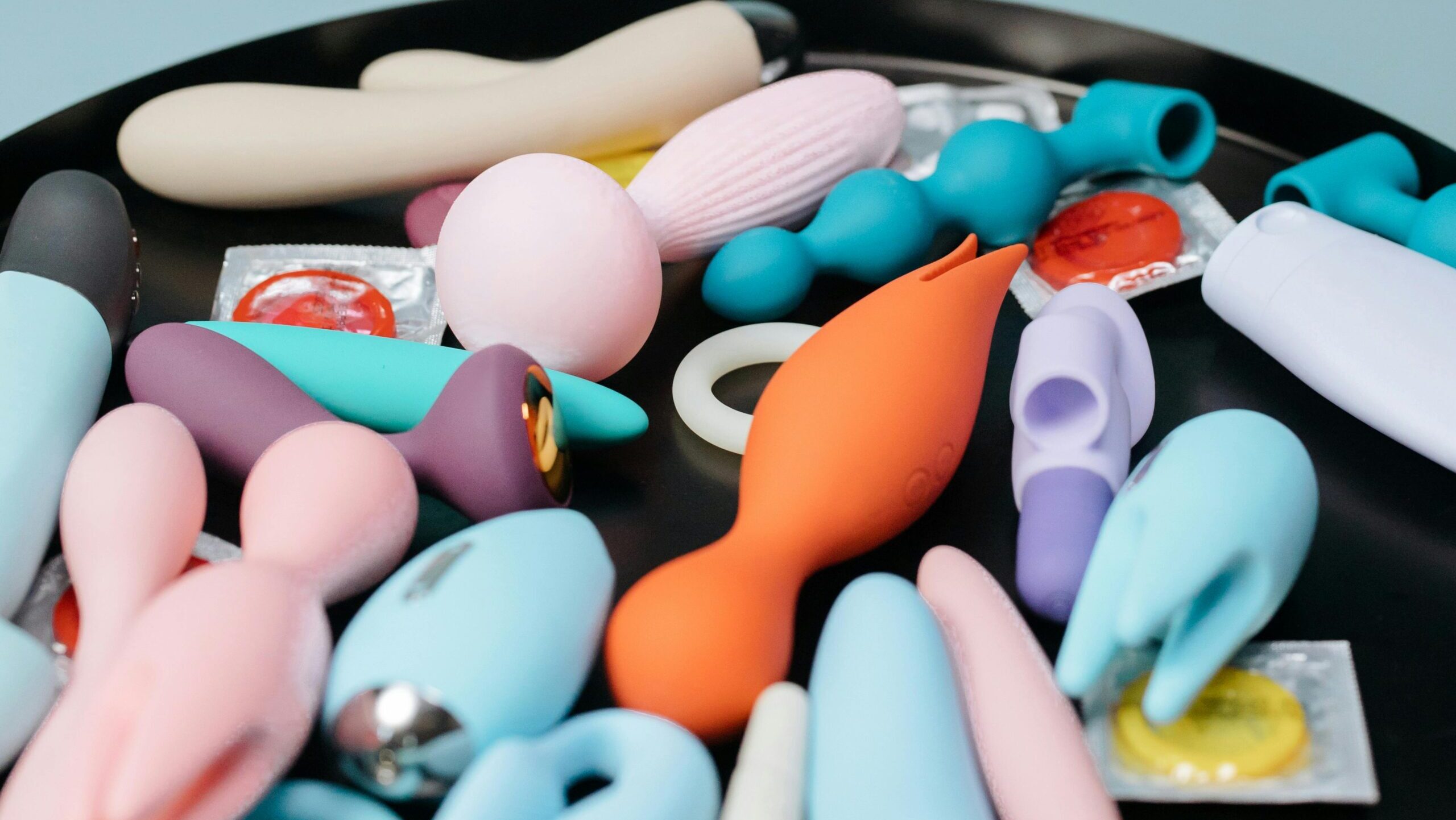Sex toys can be the perfect companions in the bedroom, but only if they are safe.
Published in Microplastics and Nanoplastics, this 2023 article takes a closer peek at the sex toy industry. Revealing our intimate moments may be at risk of microplastics and phthalates.
When seeking pleasure often transcends caution, a disruptive study emerges to cast a spotlight on the unseen hazards lurking within our bedside tables.
The Academic Exploration
“Bringing Sex Toys Out of the Dark: Exploring Unmitigated Risks” by Joana Marie Sipe Ph.D. and Ph.D. Student Jaleesia D. Amos, along with Dr. Robert F. Swarthout, Dr. Amalia Turner, Dr. Mark R. Wiesner, and Dr. Christine Ogilvie Hendren, examines the materials and health implications associated with sex toys.
Their research stands at the forefront of consumer safety. It challenges the status quo and urges a closer examination of products designed for our more private yet incredible moments.
“The absence of sufficient risk assessment or management in sex toys, as highlighted by our research, points to a glaring oversight in consumer health protection.” (J. Sipe, et al.)
The researchers uncover potential risks but also champion transparency and safety in the sex toy industry. They urge us to embrace a safer, more informed, and conscientious approach to the design and use of sex toys – ensuring that pleasure does not compromise health.
Under the Microscope

The study analyzed four individual sex toys: an anal sex toy, anal beads, a dual vibrator, and an external vibrator. Each toy represents a different category and use. Thus, providing a broad overview of what many might have tucked away in their bedside table.
Each sex toy underwent abrasion testing using a standardized abrasion machine, a technique not typically associated with sex toy analysis. Their process aimed to mimic real-world use, showcasing how these products break down over time. The abrasion led to a real-time breakdown of the products into microplastics and nanoplastics, which were then solvent-extracted and analyzed using Gas Chromatography-Mass Spectrometry. This approach offered a detailed look into the compositions of the toys and the potential release of harmful chemicals during use.
What did they find?
All the sex toys tested in the study produced microplastics and nanoplastics upon abrasion. However, “the production rates varied by toy type, with the anal toy and beads releasing the most microplastics.”
Ranking the toys from lowest abrasion rate to highest, the results were:
- External Vibrator
- Dual Vibrator
- Anal Beads
- Anal Toy
These findings are crucial in demonstrating the potential for these toys to release small plastic particles that could pose health risks upon exposure.
Chemical Concerns
The analysis highlighted the presence of endocrine-disrupting phthalates in all tested toys at levels exceeding hazard warnings, emphasizing the need for stricter regulatory oversights and safer material choices in manufacturing. They examined the material composition of these four toys, finding a range of plastics and rubber mixtures used, which underlines the importance of transparency and accuracy in product labeling.
What does this mean for consumers?
Do not ditch your entire sex toy collection!
Instead, examine the toys and determine their material composition. It’s crucial to critically assess product labels, seeking out reputable manufacturers that offer transparent information about the materials used in their products.

For future purchases, consumers may consider sex toys comprised of:
Medical-Grade Silicone: This material is renowned for its safety due to its stability and non-porous nature, making it less likely to harbor bacteria and not release harmful substances.
Try out: Vibrator, Dildo, Anal Beads
Borosilicate Glass: Its non-porous surface and chemical stability make it an excellent choice for consumers concerned about chemical exposure.
Try out: Glass Dildo, Glass Anal Plug, Glass Anal Beads
Stainless Steel: It’s non-porous and resistant to corrosion. It doesn’t degrade or release harmful substances.
Try out: Stainless Steel Dildo, Stainless Steel Ben Wa Balls, Anal Hook
Future Directions for Sex Toy Safety Research
The authors outline several future research areas in having sex toys safer, emphasizing a thorough plan to identify and lower potential health dangers.
Testing with Bodily Fluids: They suggest adding real or artificial body fluids and tests that mimic real-life abrasions. This would help us understand how sex toys react with different body fluids better.
Examining Nano-Scale Particles: Studying very small particles that may move through the body’s natural barriers. This is important because harmful chemicals like phthalates could leak out of the toy’s material and into the body.
Exploring High-Tech Sex Toys: As the sex toy industry grows with technology, like artificial intelligence, new materials, and robotics, there’s a growing need for consistent testing methods. These methods should measure exposure to tiny plastic particles and chemicals from using these products, especially considering their effects on the skin and inside the body.
“Increased awareness of potential risk can catalyze a broader conversation around protecting consumers from sex toy risks.” (J. Sipe, et al.)
Looking Ahead
As we stand at the intersection of health, technology, and intimacy, it’s time to build a future where pleasure does not compromise safety.
Joana Sipe and colleagues shed light on a too often overlooked aspect of consumer health; drawing our attention to the underexamined terrain of sex toy safety. They highlight a critical gap in our understanding of what makes a sex toy truly “safe” and call into question the materials traditionally favored by manufacturers. Their findings underscore the importance of advocating for stricter safety standards, more accurate labeling, and comprehensive research to guide consumers toward making informed choices.
Such advancements could significantly define our understanding of exposure risks and pave the way for safer, more pleasurable sexual wellness products.




